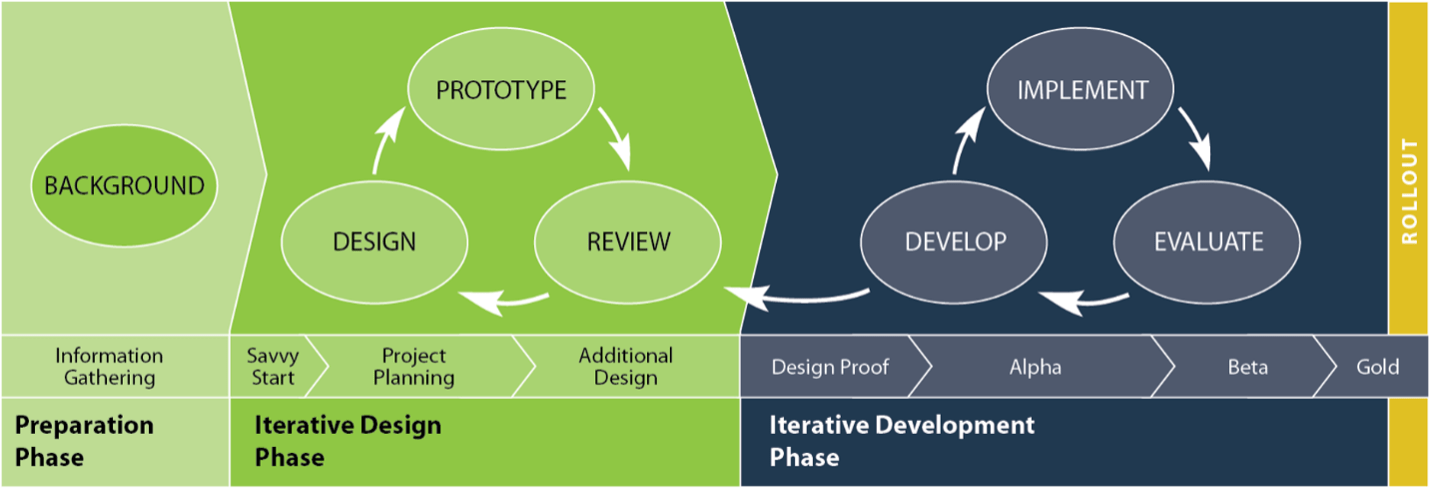In the constantly changing realm of Human Resources, the crucial role of Learning and Development (L&D) functions is to ensure that employees acquire the essential skills to remain competitive. Conventional instructional design models such as ADDIE are slowly giving way to more flexible and dynamic approaches. Leading this transformation are two notable methodologies: the Successive Approximation Model (SAM) and Rapid Prototyping. These approaches provide HR professionals with innovative strategies to deliver impactful training programs.
Successive Approximation Model (SAM) in HR L&D
Scenario:
Imagine an HR team tasked with developing a cybersecurity training program to enhance the digital literacy of employees. With the threat landscape evolving rapidly, traditional training methods no longer suffice. The HR team decides to implement SAM to create a responsive and adaptive cybersecurity training solution.
Step 1: Analysis
The HR team conducts a thorough analysis of the organization’s current cybersecurity knowledge base and identifies specific skill gaps. They engage with cybersecurity experts, conduct surveys, and analyze data to understand the unique needs of their workforce.
Step 2: Design
Based on the analysis, the HR team collaborates with instructional designers to outline the key learning objectives and content. Using SAM’s iterative approach, they create a prototype of the cybersecurity training module, incorporating interactive elements, real-world scenarios, and gamification to enhance engagement.
Step 3: Development
The prototype is then transformed into a functional module, leveraging e-learning platforms and incorporating multimedia elements. The iterative nature of SAM allows for continuous refinement as the module is developed, ensuring it remains aligned with the evolving cybersecurity landscape.
Step 4: Implementation
The HR team introduces the initial module to a small group of employees for testing and feedback. This iterative cycle allows them to make real-time adjustments based on user responses, ensuring the final product is well-received and effective.
Step 5: Evaluation
After the initial implementation, the HR team evaluates the training module’s effectiveness through assessments, feedback surveys, and performance metrics. SAM’s iterative approach facilitates ongoing improvements, ensuring the cybersecurity training program remains relevant and impactful.
Rapid Prototyping in HR L&D
Scenario:
A multinational corporation is introducing a new enterprise resource planning (ERP) system, and the HR department is responsible for training employees on its usage. Rapid Prototyping is chosen to expedite the development process and ensure that the training aligns with the specific needs of different departments.
Step 1: Needs Assessment
The HR team collaborates with department heads to identify the unique requirements of each team. Recognizing that different departments will use the ERP system in distinct ways, they prioritize customization to maximize the relevance of the training.
Step 2: Prototyping
Using rapid prototyping tools, the HR team creates a basic version of the ERP training module, focusing on core functionalities. This prototype is then shared with a select group of employees from diverse departments to gather immediate feedback on usability and relevance.
Step 3: Feedback and Iteration
Based on the feedback, the HR team iterates on the prototype, refining content, incorporating additional department-specific scenarios, and improving user interfaces. The rapid prototyping process allows for quick adjustments, ensuring the training aligns precisely with the unique needs of each department.
Step 4: Implementation
Once the prototype aligns with the diverse needs of the organization, the HR team launches the training program across departments. The iterative nature of rapid prototyping continues during implementation, with ongoing refinements based on real-time user experiences and feedback.
Step 5: Evaluation and Continuous Improvement
Post-implementation, the HR team conducts assessments and gathers feedback from employees. This information is used not only to evaluate the immediate impact of the training but also to inform continuous improvement. Rapid prototyping’s iterative cycle ensures that the ERP training program remains agile and responsive to changing organizational dynamics.
Conclusion
SAM and Rapid Prototyping have emerged as powerful tools in the arsenal of HR professionals seeking to revolutionize the L&D function. By adopting these methodologies, HR teams can create training programs that are not only responsive to the evolving needs of the workforce but also agile enough to adapt to the dynamic challenges presented by today’s fast-paced business environments. As organizations prioritize continuous learning, SAM and Rapid Prototyping stand at the forefront, ushering in a new era of transformative training in the realm of Human Resources.











